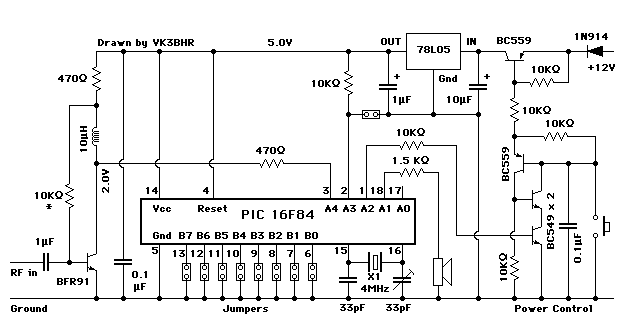
Three jumpers connected to pins 6, 7 and 8 allow the selection of 8 different morse speeds, from around 8 wpm to 20+ wpm. The jumper on pin 8 has the greatest effect, the one on pin 6 has the least.
The PIC also has a 9600 baud serial ASCII output from pin 17. Pin 9 can be grounded to turn the morse off, leaving only the serial ASCII output active.
A jumper on pin 2 sets the count resolution, either 3 or 5 digits after the decimal point (1 KHz or 10 Hz resolution)
See the previous article for details of the other jumpers on pins 10, 11, 12 and 13.
The extra transistors on the circuit diagram implement a push button "start" function. At the completion of one measurement, the PIC turns its own power off. This is inherently troublesome as the PIC may change its little mind. The power control circuit prevents this. The whole lot can be deleted and replaced by a single pole switch if you want.
And, for the "assembler challenged" here is the hex code!
And for your complete diversion from the project, here is a programmer to blast the HEX code into the PIC.